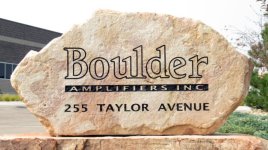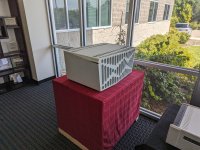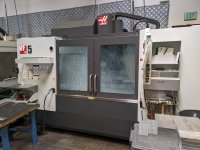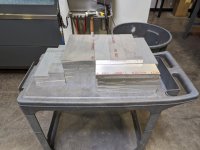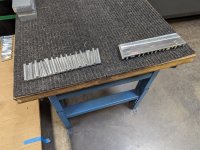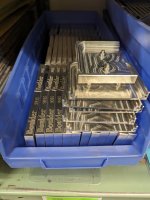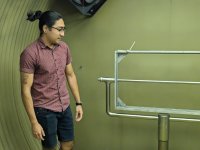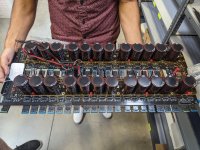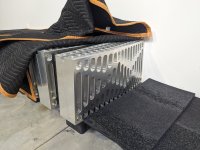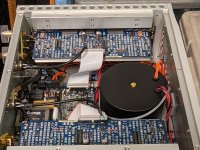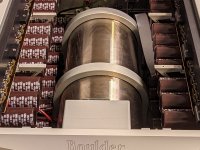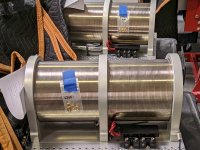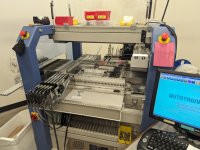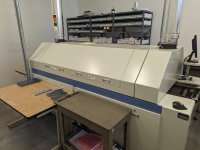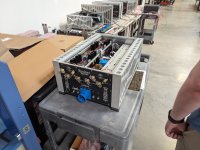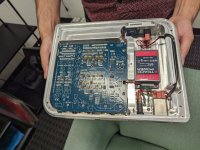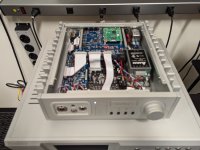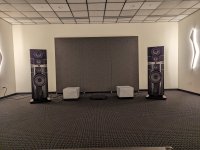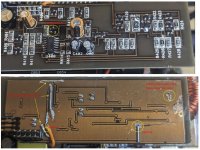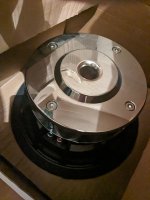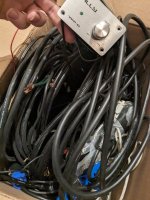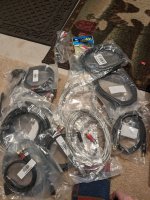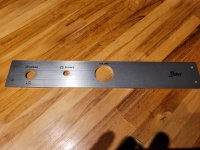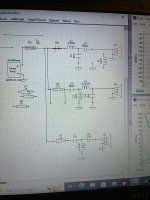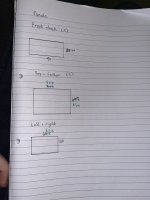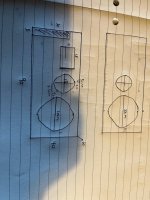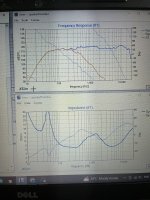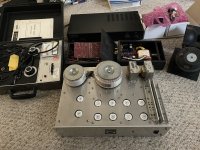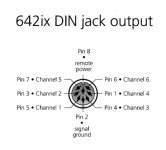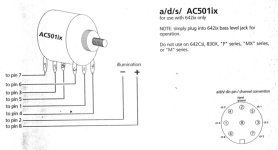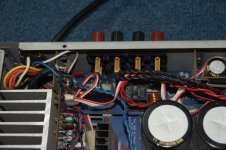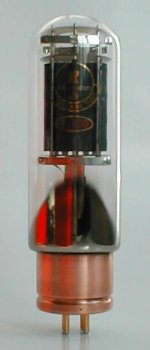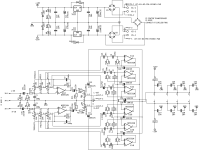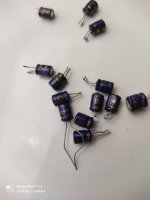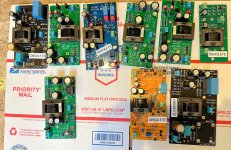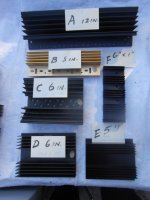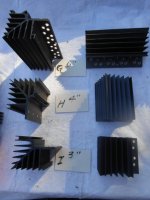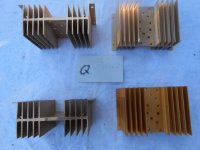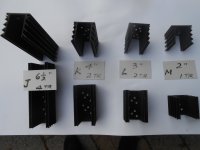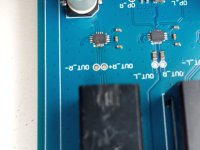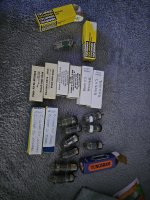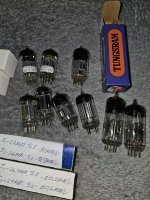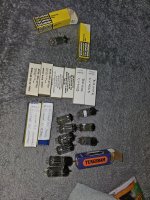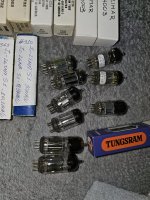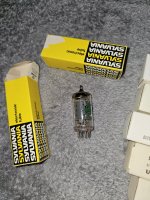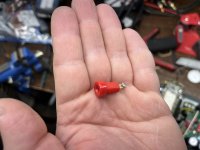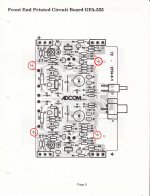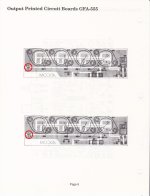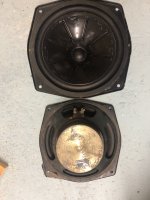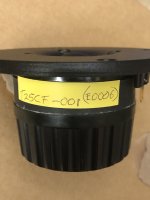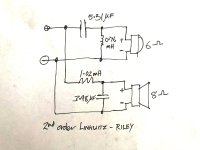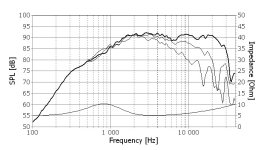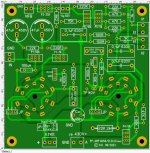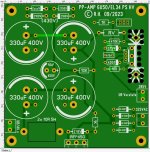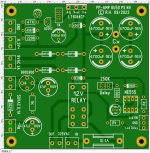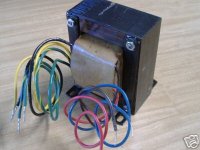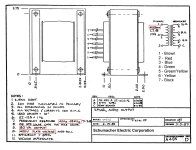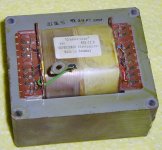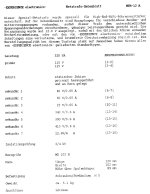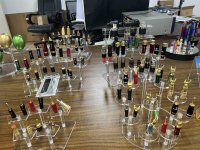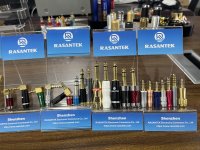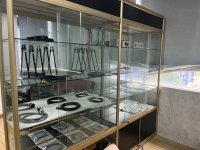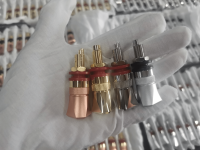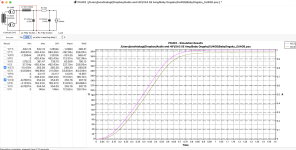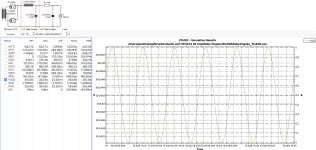Hello all,
Yes, audio enthusiasts, the tippy top of our audio goal and the quest for the sonic holy grail, has been seen and heard, if, however, for a short period of time. And what a listening experience it was.
While on a recent vacation trip to Colorado to visit my son, who now lives there, we were making a list of sights to visit and see, among other easy paced activities. Before we left NY, my son suggested and scheduled visits to a couple audio manufacturers in the area. We were visiting family in Boulder and for these two factory tours, my son Corey called ahead and made arrangements for Wednesday. I had heard of one of these manufacturers, but not the other. The first visit was to PS Audio, and the second was to Boulder Amplifiers(BA). Let me say this for starters; had BA been first on our list, my son and I would likely have not made it to PS Audio, and, still be listening in the sound room at BA, 7 days later when our trip ended.
BA builds several very high-end audio products. Their flagship product is the Model 3050, 1500W Mono Block amplifier. This is a work of art as much as it is an amplifier. Craftsmanship is outstanding and superbly executed. Some of the physical specs;
o 22.6" wide
o 13.4" high
o 34.7" deep
o 450 lbs each
o solid granite base, 75 lbs
o current price: $205K dollars
Full specs can be found
here.
As we arrived at BA - in a typical business/manufacturing park in Louisville, CO we were met in the small lobby (very understated), by a very nice, energetic, and well-spoken young man named Kenzo. I'd say around 30ish yrs old, and he ended up being a most knowledgeable and gracious host. We exchanged names and he told us a bit about BA. He told us we'd see all aspects of the manufacturing process, and pictures were welcome. We armed our smartphones!
He walked us through, the entirety of their manufacturing process, starting with the milling machines. These are used with raw billets of aluminum (various sizes), which are milled to the specification of each part. One machine was running and milling a small aluminum part used in their proprietary gain stage. He showed us rooms with both raw billets and freshly milled small parts where fine hand sanding is done, and parts stored. Many internal parts of their amps are milled from aluminum as well (think internal resistor supports). Even the remotes are milled in-house. We moved on to a much larger(I don't want to call it a room, as much as a space). This was cylindrical in shape with one end sealed, and the other with a door. It was around 8-10ft in diameter, and roughly 14ft long. This was where the glass-sanding (bead-blasting) was done, by hand, to the massive side heat sinks, and top and bottoms of the amps. Glass beads are used to deliver a more uniform and evenly smooth finish. They farm out the anodizing process to another firm in the Denver area.
He moved us along and showed us soldering stations where thru-hole (and some SMD) parts are soldered to various PCBs. He also showed us the electronic parts inventory area, where they keep parts on hand for amps and other device that date back 25 or more years. We then moved on see how the massive toroidal power transformers are cased in black epoxy/resin substance that hardens and keeps the humming and vibrations down. No surprise their largest amp the 3050, uses 4 of these massive transformers in one cylindrical tube. Kenzo was not sure of the weight of the raw transformer, but he let me hold one and I'd say, easily 20-25lbs each. The 3050 outputs 1500W/channel! Of pure Class A amplification. All sub-modules and assemblies are tested individually before hand assembly is done.
Kenzo then showed us their pick-n-place machine for stuffing SMD parts and the 'largish' soldering machine. PCBs are not fabbed at their facility, but are made in the US. He also showed us their warehouse and shipping area, where the very heavy components are boxed and crated for shipping to their dealerships. Other, less weighty items are double-boxed with uber-thick cardboard for safe shipping. As we were walking to the listening room, we got to meet and speak briefly with the owner/CEO of BA, Jeff Nelson. More about Jeff and the BA story can be found on the internet and YouTube.
Now for the most exciting part of our tour....
The last part of the tour, and probably the most anticipated, was getting to hear what the BA gear could dish out - specifically, the 3050 mono block amplifiers, each attached to the gorgeous Focal Grande Utopia EMs. And DISH OUT they did! The equipment used in their demo room that we listened to consisted of; their model 812 DAC/Streamer/Preamp feeding their 3010 Preamplifier with separate Power supply, feeding the 3050 mono block amps and each feeding the enormously large, Focal Grande Utopia EM in red. Just for some idea just how large these speakers are.. they stand 80" tall, 26" wide and 35" deep. Oh, and by the way, weigh in at 584 lbs each!
The listening room was about roughly 20' wide x 30' deep. Kenzo provided the exact dimensions, but I can't recall the details. The only treatments in the room were large roughly 9 x 10' cloth covered shallow panels in the middle of each wall. They took a very conservative approach with treating the room, so nothing fancy.
The moment of truth was about to be revealed as Kenzo took out his phone and fired up the first track using Roon. I believe the track was all instrumental without vocals, but can't recall the specific details. All I can remember was how it sounded. The absolutely smoothest, effortless music that has come out of any system I've heard. The precision and articulation of each and every note could not have been better. My son and I were equally amazed with the sound we were hearing. The pure sonic expression of music, as if you were seated in the middle seat of the studio, or stage. And the noise floor? Well, it simply wasn't there.
Next up was a very unique piece by Yosi Horikawa, entitled 'Bubbles'. However this piece was recorded in 2 dimensions, it sounded like bubbles bouncing and popping from wall to wall. The soundstage simply jumped off the stage, so to speak, and widened from wall to wall. You clearly heard sound outside the physical side boundaries of the speakers themselves. Impressive. 3D sound from a 2-channel. Awesome.
Kenzo handed the phone to my son and he queued the track, 'Give Life Back to Music', by Daft Punk. This track is a favorite of his and really sounded over the top with this system. Once again, the details and dynamics were so crisp and distinct. The way music should be heard and enjoyed. Next in the queue was familiar to everyone, 'Landslide', by Fleetwood Mac. This track was impressive as well, The guitar work was outstanding and the soundstage was telling. Every note plucked was clear and distinct. While not as dynamic per se, it was very well rendered on this system.
Next, I queued up a favorite of mine that I use as a reference, goto track when I audition anything I've built(or bought) - whether an amp, pre, or DAC//streamer remote for Roon. It is one of the most well-done recording in my library, short of some noted DSD tracks from Michael Jackson's Thriller album. The track is 'Walk My Way', by Beth Nielsen Chapman, from her self-titled album. This song has a lot of dynamics, done with a lot of staccato (quick end) to the notes, each note was precisely executed and positioned on the soundstage. The stereo separation was obvious, but well-balanced. At the volume we were listening at, this track brought a big smile to my face, noting how well it was reproduced, confirming my own ears when I tagged it years ago as a demo track. Even Kenzo made a note to save it in his favorites for other occasions. Oh, did I say the system we were listening to came from $410K worth of amps, and $280k worth of speakers! Not to mention their preamplifier that adds another $233K!
There had to be a end to our listening fun. I sat there in awe saying to Kenzo, that this system, "was the cleanest sounding systems I had ever heard." As well it should be. It ticked every box for what an audio system should sound like. Yeah, no kidding! At this price point, who wouldn't want to listen to it. I know one thing, my current system has a lot to aspire to! A well designed, engineered, executed and delivered - price no object - will richly reward you with the best sound your ears have ever heard.
Sadly, we had to leave, but Kenzo mentioned, that anytime I was in the area he would arrange a weekend session. I gladly accepted.
Ps. Nay sayers will baulk at the price of the system described here, and say, 'what average audio enthusiast can afford something like this'? Very few, and I would agree. But, that doesn't mean we can't afford ourselves, the opportunity when given the chance to experience the big, bold pure music that pours out of these speakers like a crystal clear Rocky Mountain stream, backed only by exacting electronics, and in the end 1500W of Pure Class A amplification through two of the well-regarded, Focal Grande Utopia EM speakers. For us, it was quick side journey to the mountain top, if only for a moment in time, to listen to sound approaching sonic nirvana.
If you ever find yourself in the Denver, contact Boulder Amplifiers and arrange a tour of their facility. I guarantee you will not regret it, and it will be of those times you think back on it with a big smile on your face.
More on Boulder Amplifiers
here.
Rick
